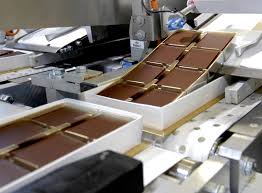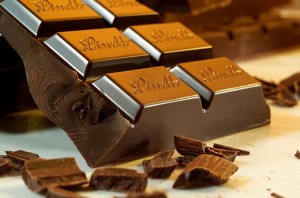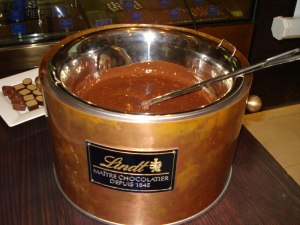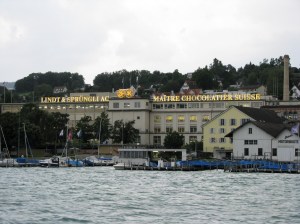

 I love chocolate. I prefer the Swiss kind, very dark. (It helps me write.)
I love chocolate. I prefer the Swiss kind, very dark. (It helps me write.)
I once went to a chocolate town in Switzerland named Kilchberg. That city is the home of the Lindt & Sprungli factory.
Kilchberg is not a typical jumping-off spot for the tourist with a Swiss Rail pass, but it lured Thomas Mann at the end of his life. His son Golo Mann, an essayist and historian, also settled into Kilchberg at the end of a distinguished literary career, living in his parents’ house with his mother.
So Kilchberg has this literary and chocolate past, you see. If ever writers needed a pilgrimage spot, Kilchberg could work.
The town smells insanely good. The Lindt & Sprungli factory furnaces burn off the “bad” chocolate (as if that adjective could be stuck next to the noun and make sense). So the closer you get, the dizzier you become. Tours can be arranged at this factory, and visitors are given bags of sample chocolate.
I guess there used to be bad chocolate. As most prolific readers (that would be writers) know, chocolate was heavily in use in the New World, but not like we eat it today. Sugar wasn’t part of the mix. Ground cocoa was roasted and mixed with red pepper, vanilla and water. The Milanese traveler Girolamo Benzoni said chocolate seemed “more suited for pigs than men.” About 70 years later, the Spanish began to experiment with chocolate.
The trend of eating chocolate in sold form spread from Spain throughout Europe. In 1674, chocolate in the shape of rolls and cakes “in the Spanish fashion” were being sold in Lodon. Rodolphe Lindt (1855-1909), following in the footsteps of chocolatiers Henri Nestle (who invented condensed milk) and Daniel Peter (who mixed the condensed milk with chocolate) brought chocolate into new states of lusciousness.
Lusciousness is of course what writers need in order to think, write and console themselves.
The reason Lindt is called Lindt & Springli is due to Rodolphe Sprungli-Schifferli buying the Lindt trademark and recipe secrets in 1899 for 1 1/2 million Swiss francs.
This sum (even then!) should give writers pause. We are all trying to write the breakout novel. People eat chocolate more than they read. Who said the limits of chocolate have been explored? Or for that matter, why invent or write anything? Employees at Lindt & Sprungli can eat as much chocolate as they want.
What are we doing at our computers when we could be in a chocolate factory?
